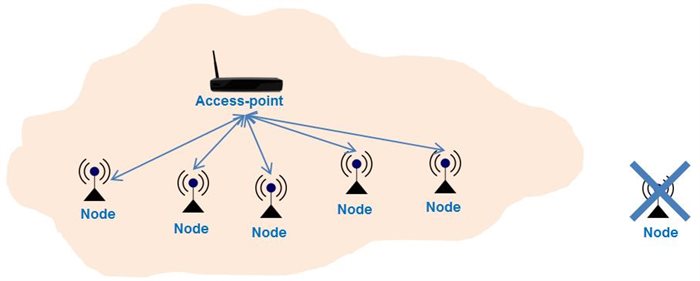SSZTB90 june 2016
When you hear ‘mesh’ which connectivity technology comes to mind? ZigBee®? How would it be to create a similar wireless mesh network using your existing Wi-Fi® infrastructure – great, right?
With the constantly changing needs in the wireless space, mesh creates new use-cases and applications which were previously not possible with “legacy Wi-Fi” technology since they don’t need to deploy more access-points and cables to reach far-away devices such as wireless speakers, smart meters, lighting or security cameras.
Legacy Wi-Fi deployments are generally based on a star topology which is very simple to implement but always requires a central entity, access point (AP), to allow communication between multiple devices. Since all traffic, even between two adjacent devices, has to bounce through the AP, this creates tremendous congestion on the AP. Additionally, range is limited to the range of the access point.

However, a Wi-Fi mesh network, made up of radio nodes organized in a mesh topology, extends coverage without the need for additional equipment or wiring, and is suitable for a wide variety of applications, including uses for audio, industrial and home automation.

Along with range extension, a Wi-Fi mesh network provides:
- Seamless connectivity via its self-healing capability
- Access point offload by routing traffic around it
- Network connectivity even without an access point
- Multi-hop ability for easier network management
TI’s Wi-Fi mesh networking solution uses our WiLink™ 8 Wi-Fi and Bluetooth®/Bluetooth low energy combo-connectivity modules and is based on the 802.11s standard. To keep this solution simple and extremely easy to use, our software release (R8.7) is based on an open source package which is publicly available. In addition, we took the open source software, fixed several bugs and modified it in a way which provides a more robust and reliable mesh solution.
- The enhanced path selection algorithm allows lower number of hops and improves overall performance of the network. Scalability and network robustness is also improved since new devices can seamlessly be added to the network and devices that are removed are replaced by other devices while the paths are automatically optimized.
- The clock synchronization scheme over mesh allows an in-zone, high-precision clock synchronization, great for audio and industrial applications.
- The mesh explorer tool, as a part of the mesh solution, allows visual representation of the mesh network and its properties.
Start your evaluation of Wi-Fi® mesh with the WiLink™ 8 evaluation platform - the new element14 cape and the BeagleBone Black today!
Additional Resources
- Order now: WiLink 8 combo-connectivity modules
- Learn more about mesh over Wi-Fi
- Download the R8.7 software update to enable mesh support on any WiLink 8 module
- Watch our Wi-Fi mesh overview video